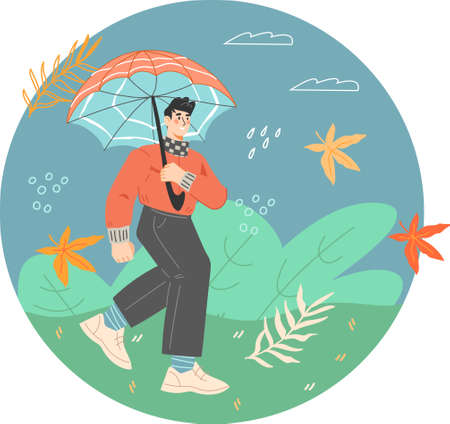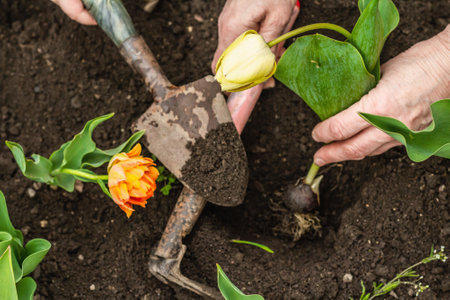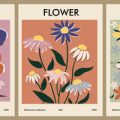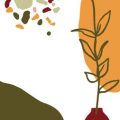Understanding Local Climate Zones
If you’ve ever wondered why your neighbor’s tomatoes seem to thrive while yours struggle, the answer might be rooted in your local climate zone. In the United States, climate zones—also known as hardiness zones—are more than just numbers on a map; they are an essential guide for every gardener. These zones, defined primarily by the average annual minimum winter temperature, help us understand which plants will flourish in our backyards and which are better left at the garden center.
Climate zones matter because they set the stage for what’s possible in our gardens. They take into account everything from frost dates and heat tolerance to humidity and rainfall patterns. When we overlook these factors, we risk planting varieties that simply can’t cope with our local conditions. In short, knowing your climate zone is like having a gardening roadmap—it points you toward success and helps avoid disappointment.
Whether you’re planning a summer vegetable plot or dreaming of a lush perennial border, understanding your climate zone should always be your first step. By matching plant choices with the realities of your region, you’ll not only save time and money but also foster healthier, more resilient gardens that can weather whatever Mother Nature has in store.
2. Common Mistakes When Overlooking Climate Zones
When gardeners ignore their local climate zones, they often make some surprisingly common mistakes that can turn an enthusiastic gardening season into a frustrating experience. One major error is planting species that simply aren’t suited for the local temperature extremes or rainfall patterns. For example, trying to grow tropical plants in a zone with cold winters leads to dead or stunted plants, while drought-sensitive varieties may wither in arid regions. Another frequent mistake is misjudging the length of the growing season—planting tomatoes too early in the spring or too late in the fall can mean no harvest at all.
The Impact of These Errors
These missteps don’t just waste time and money—they can also disrupt soil health and local ecosystems. When non-native plants struggle to survive, gardeners may overcompensate with fertilizers, excessive watering, or chemical pesticides. This not only affects your yard but can also harm beneficial insects and pollinators essential for a thriving garden.
Typical Gardening Mistakes and Their Consequences
| Mistake | Consequence |
|---|---|
| Planting out-of-zone species | Poor growth, plant death, wasted resources |
| Miscalculating frost dates | Crops lost to unexpected freezes or heatwaves |
| Ignoring rainfall patterns | Overwatering or underwatering, root rot, poor yield |
| Using inappropriate soil amendments | Nutrient imbalance, environmental runoff issues |
Learning from Local Experience
Understanding what works—and what doesn’t—in your region is crucial. By paying attention to your USDA Hardiness Zone and other climate indicators, you can avoid these costly errors and set your garden up for a much healthier, more productive season.

3. How Ignoring Climate Zones Harms Plants (and Wallets)
When gardeners overlook their local climate zones, it’s not just a minor mistake—it can seriously impact both the health of their plants and their own finances. Each region in the United States has unique temperature ranges, rainfall patterns, and seasonal changes that directly affect which plants will thrive. Ignoring these factors often leads to planting species unsuited for the area, setting up a cycle of plant stress and disappointment.
Plant Stress and Poor Growth
Plants placed outside their ideal hardiness zone face constant challenges. For instance, trying to grow a tropical hibiscus in Minnesota or a New England lilac in Florida means those plants will struggle with temperatures, humidity, and sunlight they weren’t built for. This leads to weak growth, fewer blooms or fruits, and an increased risk of pests and disease. Stressed plants are like stressed people—they’re more likely to get “sick” and less likely to reach their full potential.
Wasted Resources
Neglecting your climate zone also means you’ll probably end up pouring extra water, fertilizer, and time into your garden in an effort to keep struggling plants alive. Overwatering to counteract dry climates, or using heaters and coverings to protect from unexpected frosts, quickly adds up—not just in effort but also in cost. These wasted resources could be avoided by simply choosing climate-appropriate plants from the start.
Higher Gardening Costs
The financial consequences go beyond higher utility bills. When out-of-zone plants fail (which they often do), gardeners must replace them—sometimes year after year. There’s also the expense of specialized soil amendments, pest control products, or protective structures designed to mimic a different climate. In the long run, ignoring local climate advice doesn’t just harm the garden; it drains your wallet too.
Smart Plant Choices Save Money
The bottom line: respecting your climate zone is both eco-friendly and budget-friendly. By selecting plants suited for your area, you’ll enjoy a healthier garden with less stress—for both you and your greenery—while keeping costs under control.
4. Real-Life Examples from Across America
When it comes to gardening, sometimes the best lessons are learned from real experiences—especially when mistakes are made. Let’s look at how overlooking local climate zones has impacted gardeners across different regions of the United States.
Stories of Gardeners Who Faced Climate Challenges
| Region | Gardener’s Story | Lesson Learned |
|---|---|---|
| Pacific Northwest (Seattle, WA) | Linda planted heat-loving tomatoes in early March, inspired by a national gardening magazine. Unfortunately, the cold, damp spring stunted her plants and she ended up with a poor harvest. | Check your last frost date and wait until soil warms up before planting warm-season crops. |
| Southwest (Phoenix, AZ) | Carlos tried to grow lettuce in July after seeing online videos of lush summer gardens. The extreme heat caused his lettuce to bolt and taste bitter. | Understand your region’s growing seasons—some crops do better in winter or shoulder seasons in hot climates. |
| Northeast (Boston, MA) | Megan bought a fig tree that thrived in California but couldn’t survive Boston’s freezing winters, even with mulching. | Select varieties suited for your USDA Hardiness Zone; not all popular plants can handle cold winters. |
| Southeast (Atlanta, GA) | Chris planted peonies after a trip up north, only to find they rarely bloomed because Atlanta’s mild winters didn’t provide enough chilling hours. | Learn which plants require cold dormancy and if your area provides those conditions. |
The Takeaway: Local Knowledge Matters
These stories remind us that while inspiration can come from anywhere, our gardens are deeply rooted in local realities. Taking time to learn about your own climate zone—and talking with neighbors or local experts—can mean the difference between disappointment and a flourishing backyard harvest.
5. Tips for Choosing Climate-Appropriate Plants
When it comes to successful gardening, one of the most important steps is selecting plants that are well-suited to your local climate zone. Ignoring this key factor can lead to wasted time, money, and effort—not to mention a lot of disappointment. Here are some practical tips for choosing the right plants for your garden, with a special focus on using the USDA Hardiness Zone Map.
Start with the USDA Hardiness Zone Map
The USDA Hardiness Zone Map is a gardener’s best friend in the United States. It divides North America into 13 zones based on the average annual minimum winter temperature. To find your zone, simply enter your zip code on the official USDA website or look up a map at your local garden center. Knowing your zone is the first step in narrowing down plant choices that will survive and thrive year after year in your area.
Choose Plants Labeled for Your Zone
Once you know your zone, always check plant tags and descriptions for their recommended hardiness range. Many nurseries and seed catalogs clearly list which zones a plant will do well in. For example, if you’re in Zone 7, look for plants labeled “Zones 6-9” or similar. Avoid buying plants that are only hardy to warmer or colder zones unless you’re prepared to give them extra protection.
Ask Local Experts
Your local extension office, neighborhood gardeners, or staff at independent nurseries are excellent resources. They can recommend tried-and-true varieties that do particularly well in your specific microclimate—sometimes even within the same city, conditions can vary dramatically!
Source Locally Grown Plants
Whenever possible, purchase plants grown by regional nurseries. These plants are already acclimated to your local weather patterns and soil conditions, giving them a better shot at long-term success than those shipped from far away.
Pay Attention to Microclimates
Even within your own backyard, there may be pockets where the temperature or moisture differs—a sunny south-facing wall stays warmer than a shaded corner, for example. Observe these differences and select plants accordingly; you might be able to grow something more tender in a sheltered spot.
Read Up and Experiment
Don’t be afraid to experiment with new varieties as long as they fit within your hardiness zone. Keep notes on what works (and what doesn’t) each season. Over time, you’ll develop a sense for what really thrives in your little patch of earth—and you’ll save yourself a lot of frustration by respecting what Mother Nature has in store for your area.
6. Building Resilient, Local Gardens
When you choose to honor your local climate zone in gardening, you’re setting yourself up for long-term success in more ways than one. By selecting plants that are naturally suited to your region’s temperature, rainfall, and seasonal patterns, you’re creating a garden that can withstand whatever nature throws its way. Sustainability becomes second nature: native and climate-appropriate plants require less water, fewer chemicals, and less intervention overall. This means you’re not just saving time and money on maintenance—you’re also helping conserve vital resources.
But the rewards don’t stop there. Gardens built with the local climate in mind become vibrant, thriving spaces year after year. They attract beneficial pollinators like bees and butterflies, create safe havens for wildlife, and often bounce back faster from extreme weather events. The reduced need for fertilizers and pesticides also means your outdoor space is safer for kids and pets.
Embracing your local climate zone is about working with nature, not against it. Instead of fighting an uphill battle to keep out-of-place plants alive, you’ll enjoy a flourishing garden that reflects the unique beauty of your home region—and does so with much less stress and effort.


